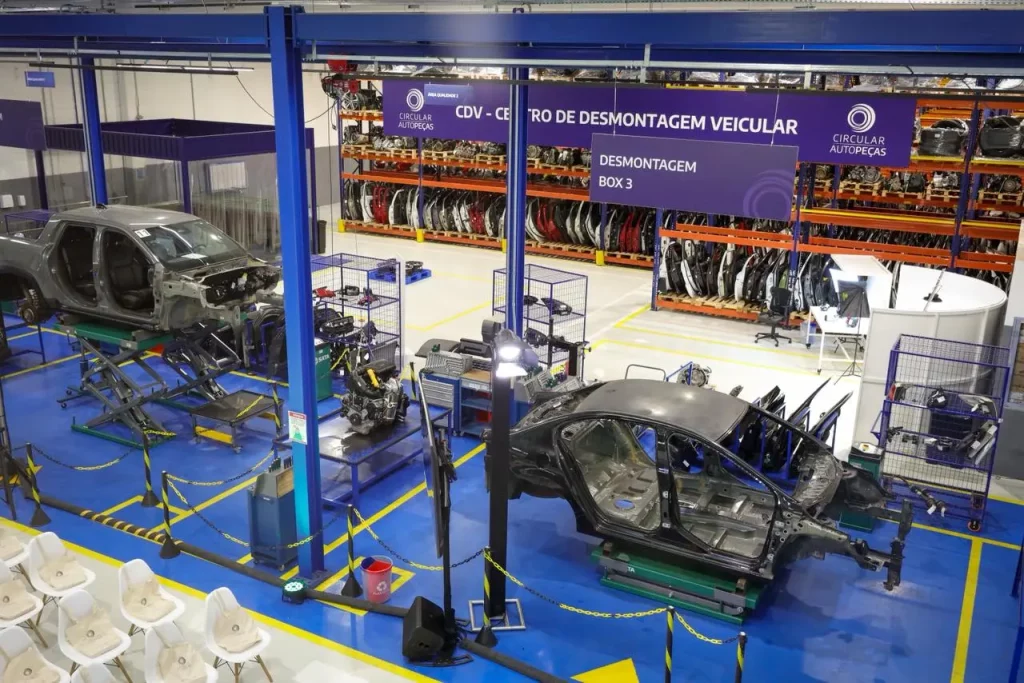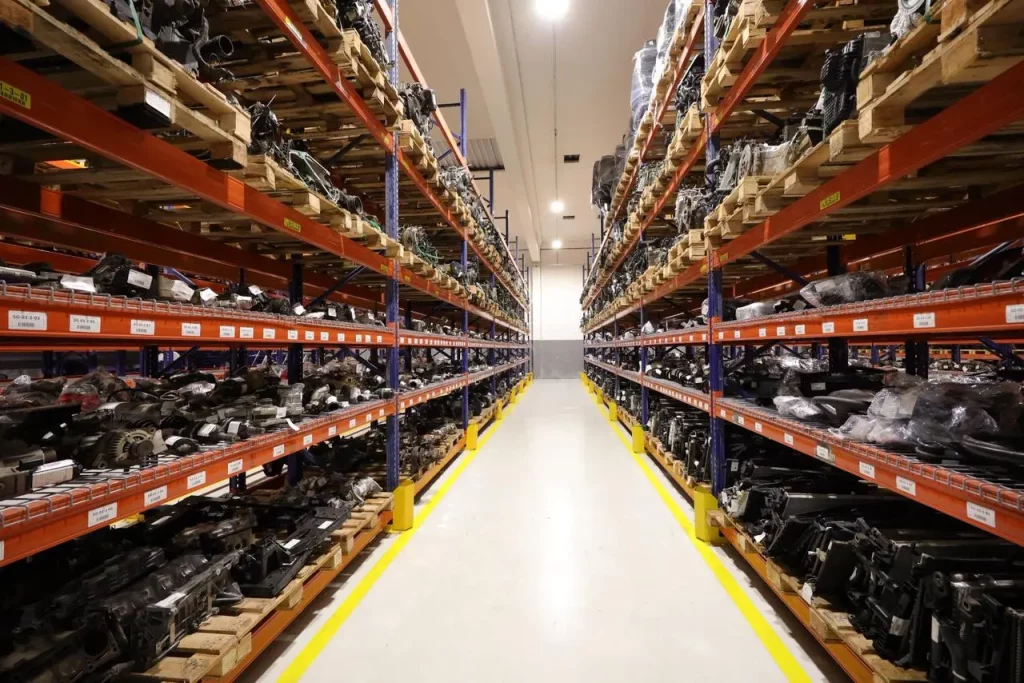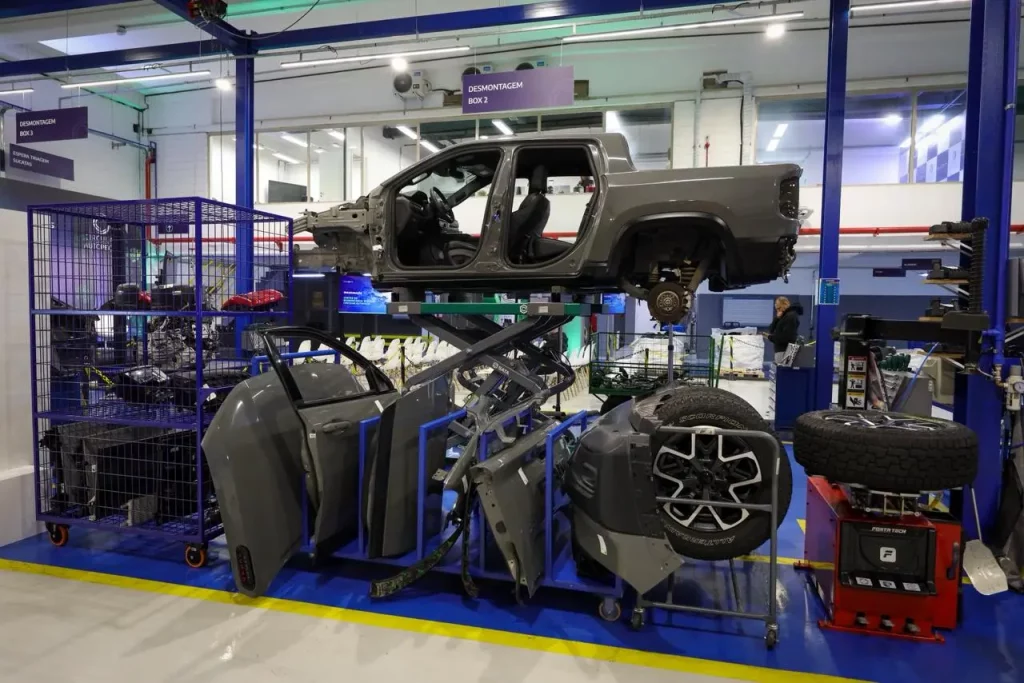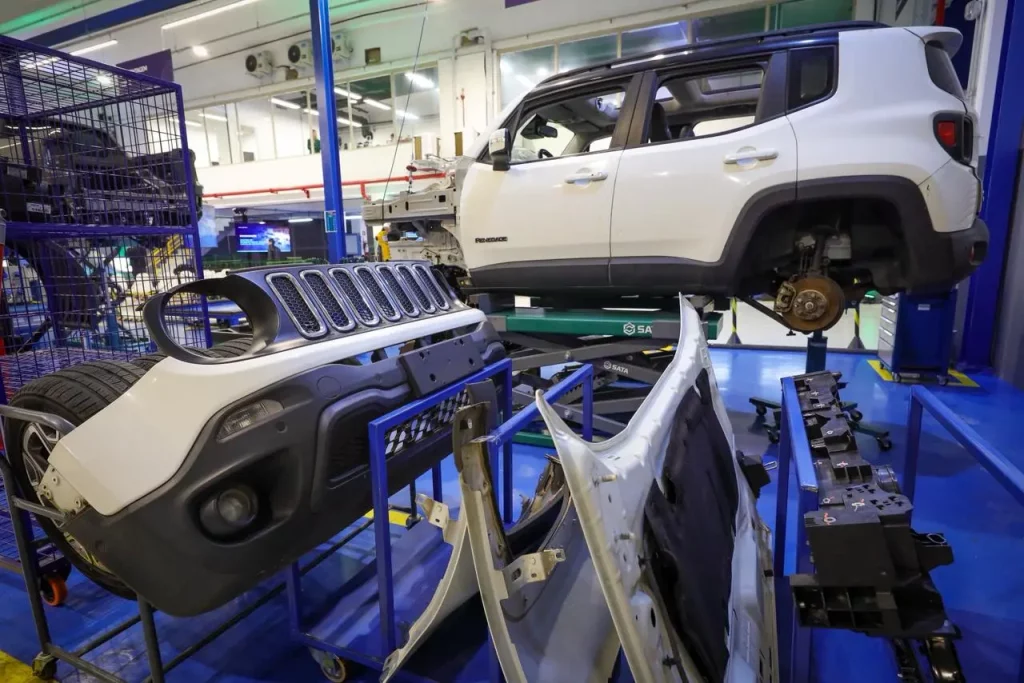Assembling companies generate revenue not only from selling cars but also from car maintenance services. Approximately 20% of their revenue comes from the aftermarket, which includes selling new parts for repairs.
It highlights a recent Stellantis project involving the introduction of used parts into the market, which provide competition for new ones.
Stellantis inaugurated a unique plant in Osasco (SP) this month, which operates as a “disassembly line” where cars are disassembled by workers rather than being assembled with parts.

Stellantis vehicles that have reached the end of their lifespan or have been involved in irreversible accidents are processed at the Veicular Disassembly Center. The facility aims to refurbish salvageable parts and sell them at premium prices in the market.
Non-original parts make up 80% of the market, according to Paulo Solti, Vice President of Parts and Services at Stellantis for South America, so it does not affect the sales of new parts.
“Non-originating parts” refer to new parts made by independent manufacturers, comprising a market worth over R$ 140 billion annually. Automakers face competition from dealership’s original new parts in this market.
This is essentially a specialized market. The typical customers are those who own cars that are brand new to three years old. Approximately 75% of customers visit dealerships to maintain their car’s well-being. However, as cars change ownership and become second or third-hand, they are less likely to be serviced at a dealership.
You have a different opportunity to participate in this harvest by using unique parts. It’s a small market next to the new components, generating a revenue of $2 billion. Stellantis is taking action to tap into this market.
The Osasco disassembly center is the initial one in South America and the second for Stellantis globally. A similar facility was opened in Turin, Italy, two years ago. Brands like BMW, Mercedes, Renault, Toyota, and Nissan also have similar structures elsewhere.
Architecture deconstruction
Fan, collector, and turbine are some of the components found in a car’s cooling system along with radiator, condenser, and other parts like coil, actuator, and water pump. Additionally, the vehicle also includes electrical components such as alternator, sensor, and bumper.
A book of concrete poetry can be created using the 400 reusable car parts, but the process of transforming disassembly into a profitable venture involves nuances as certain parts will consistently have higher demand in the market.

Insurers auction vehicles with a total loss diagnosis, which is considered a key part of the disassembly process. The initial focus is on acquiring this material in a cost-effective manner.
The driver’s door experiences ten times more wear than the rear doors due to being used more frequently. Consequently, there will be a higher demand for left front doors in the maintenance market. Therefore, it is advisable to consider this when purchasing a car.
The business must carefully choose and correctly assess the parts, considering their wear levels. Stellantis employs a rating scale from 1 to 9 to differentiate between parts. Pieces rated 1 to 3 are discarded, while those rated higher undergo refurbishment and are sold at varying prices based on their condition.
Sales take place directly at the disassembly center called Circular Autoparts, and they have also launched an online store on the Free Market under the same name.
The concept of eternal recurrence
Life after death in the automotive world extends far beyond simply reusing car parts. The majority of a car’s weight consists of recyclable metals such as steel, iron, aluminum, and copper.
In the United States, one-fifth of yearly steel production is sourced from scrap cars, totaling 14 million tons, which is nearly equivalent to half of Brazil’s steel output.
In the United States, around 95% of vehicles are recycled. In Europe, the rate is nearly 90%, while in Japan, it’s close to 100%. In Brazil, only 1.5% of vehicles are recycled. More information will follow.

At Stellantis disassembly, different partners purchase each type of metal. For instance, the canries’ plate is sold to ArcelorMittal.
Used engine oil, brake fluid, and other car fluids can be recycled by draining them from the vehicle and sending them to a refinery. Despite becoming dirty over time, oil does not lose its effectiveness and can be transformed back into a pristine state through the refining process.
Stellantis in Europe introduced a range of lubricants produced exclusively from “refined” oil in collaboration with Total Energies. The main benefit is not monetary as the production process is costly, but it brings a clear improvement in the company’s image.
Cars can be recycled and the developed world benefits from this feature, unlike Brazil, which has a decrease of 1.5%.

Small businesses are responsible for this task, as there are 7.3 thousand legitimate dismantlers, while criminals who receive stolen cars are a matter for law enforcement, not business.
Detran-accredited dismantlers have a low production rate, recycling only one or two cars each month. Stellantis can process up to 27 cars daily, totaling 8.4 thousand cars annually with operations running six days a week. This signifies a shift towards industrializing a previously manual process.
It’s just a small part of our large fleet of 50 million cars, as 2.5 million new models are produced annually by automakers. None of them will last indefinitely. Dealing with this abundance of raw materials for recycling is a promising business opportunity in Brazil.

